Ode to the Purple Passionflower: Photos and Thoughts by Bryce Lovelace
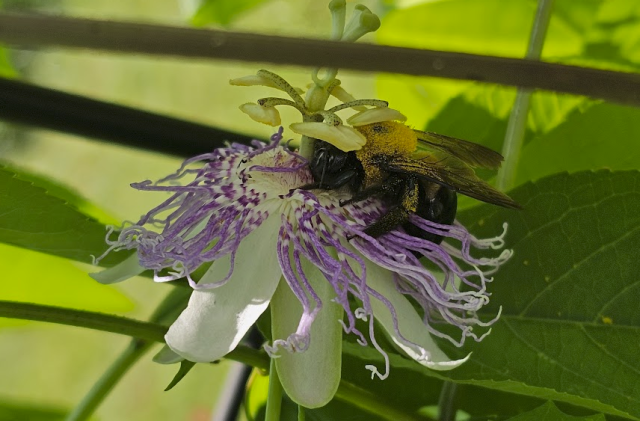
(Eastern Carpenter Bee (Xylocopa virginica) pollinating a Purple Passionflower)
How alien! How mystical! Even more crazy, this video-game flower grows in your backyard!
My name is Bryce Lovelace, and I have spent the past several years growing and researching Florida’s majestic passionflowers. I am a senior undergraduate studying meteorology at FSU. I have 5 years of experience in native horticulture with Little Red Wagon Native Nursery in Tampa, FL. I also have 3 years of experience in ornamental, native, and butterfly landscaping with Barefoot Kate Design in Clearwater, FL. I have a strong interest in weather, climate, ecology, and wildlife photography.
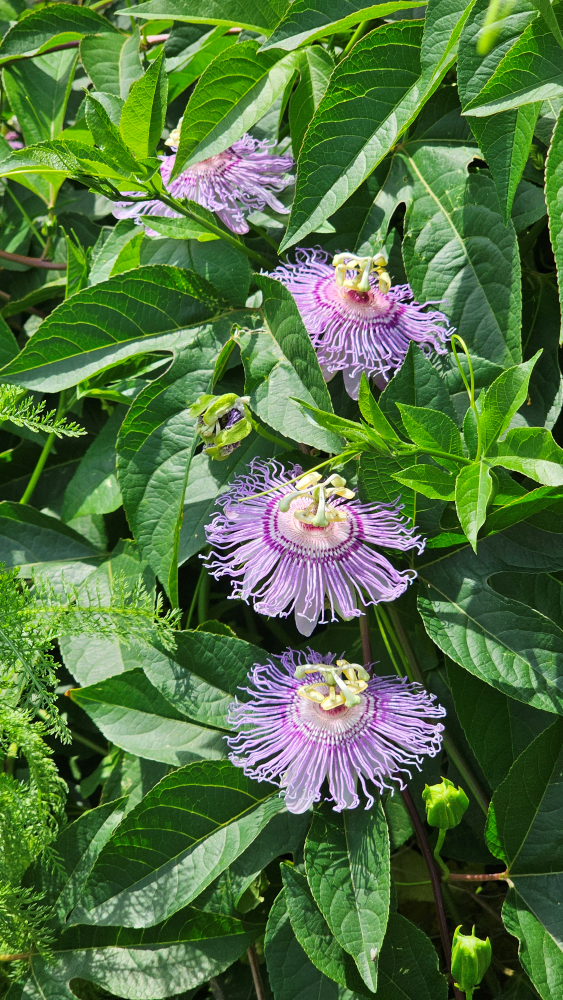
(Purple "Maypop" Passionflower, Passiflora incarnata)
One of the most coveted flowering plants in the gardening world grows here in Tallahassee! Introducing ... the Purple Passionflower (also known as Maypop Passionflower, Passiflora incarnata) Covered in coronal filaments that look like something out of the Alien movies, these flowers are unapologetically bodacious. ... And that was completely intentional.
After hundreds of thousands of years of evolution, these flowers evolved to be pollinated by larger pollinators, such as Bumblebees (Bombus spp.), Carpenter bees (Xylocopa spp.), and even butterflies like Monarchs (Danaus plexippus), and Swallowtails (Papilionidae family).
Some butterflies even find the Purple Passionflower extra tasty! Introducing the Gulf Fritillary butterfly, Dione vanillae, which is native to the region surrounding the Gulf. These large, orange butterflies can often be seen darting in your garden from the months of April to October. Their larvae, also known as caterpillars, are orange, black, and spikey. They will be found on or near the leaves of the native passionflower plants. For this reason, Purple Passionflower also makes a wonderful addition for butterfly gardens!
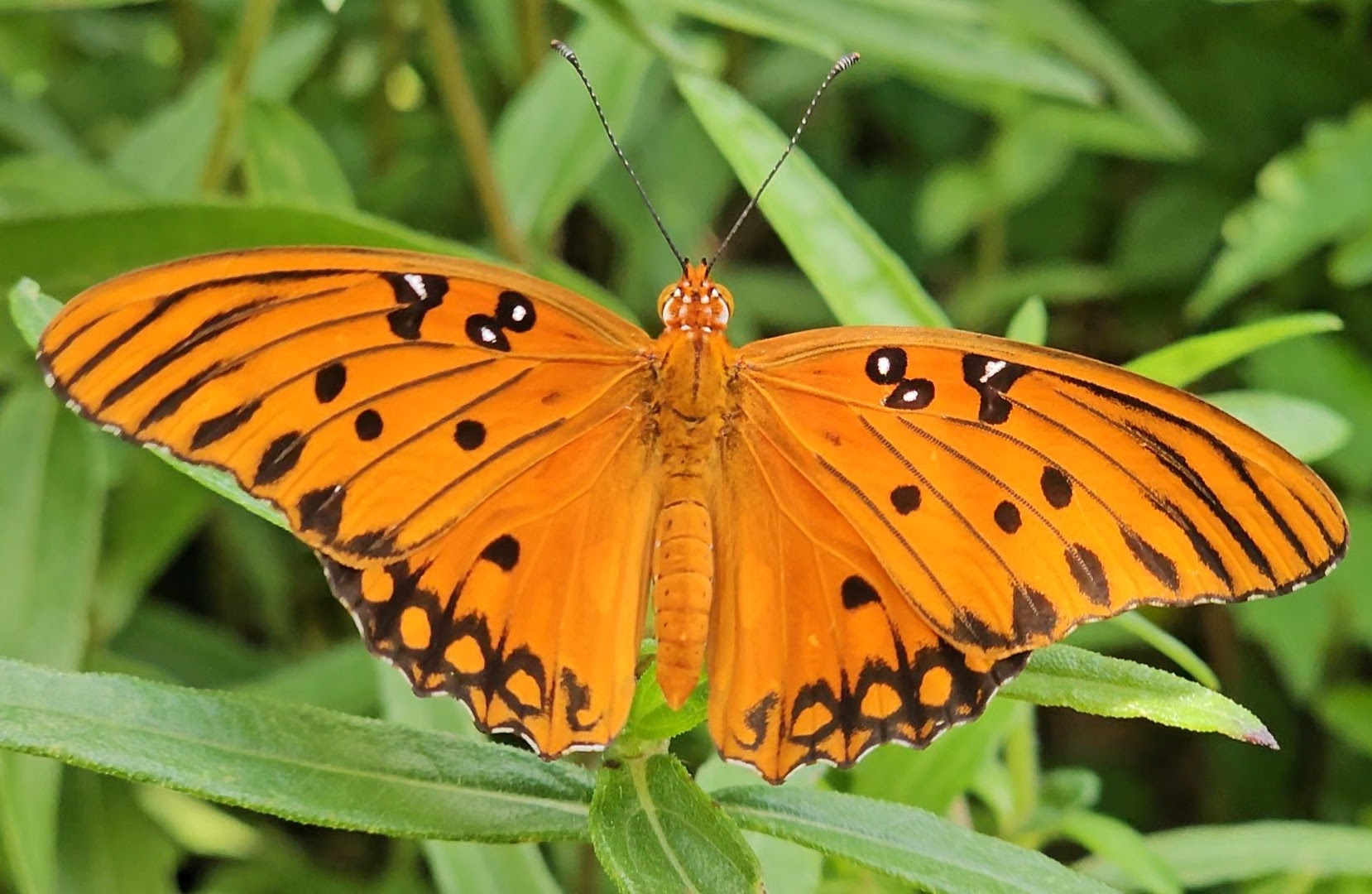
(Male Gulf Fritillary Butterfly, Dione vanillae)
Gulf Fritillary butterflies are not the only ones who feast on the passionflower leaves. Meet the Zebra Longwing (Heliconius charithonia) and the Julia butterflies (Dryas iulia)! Sadly, Julia butterflies are extremely rare this far north; they are more typically found in South Florida. The Zebra Longwing butterfly, the state butterfly of Florida, gets its name from their larval form, which is white and covered in black dots (and spikes!).
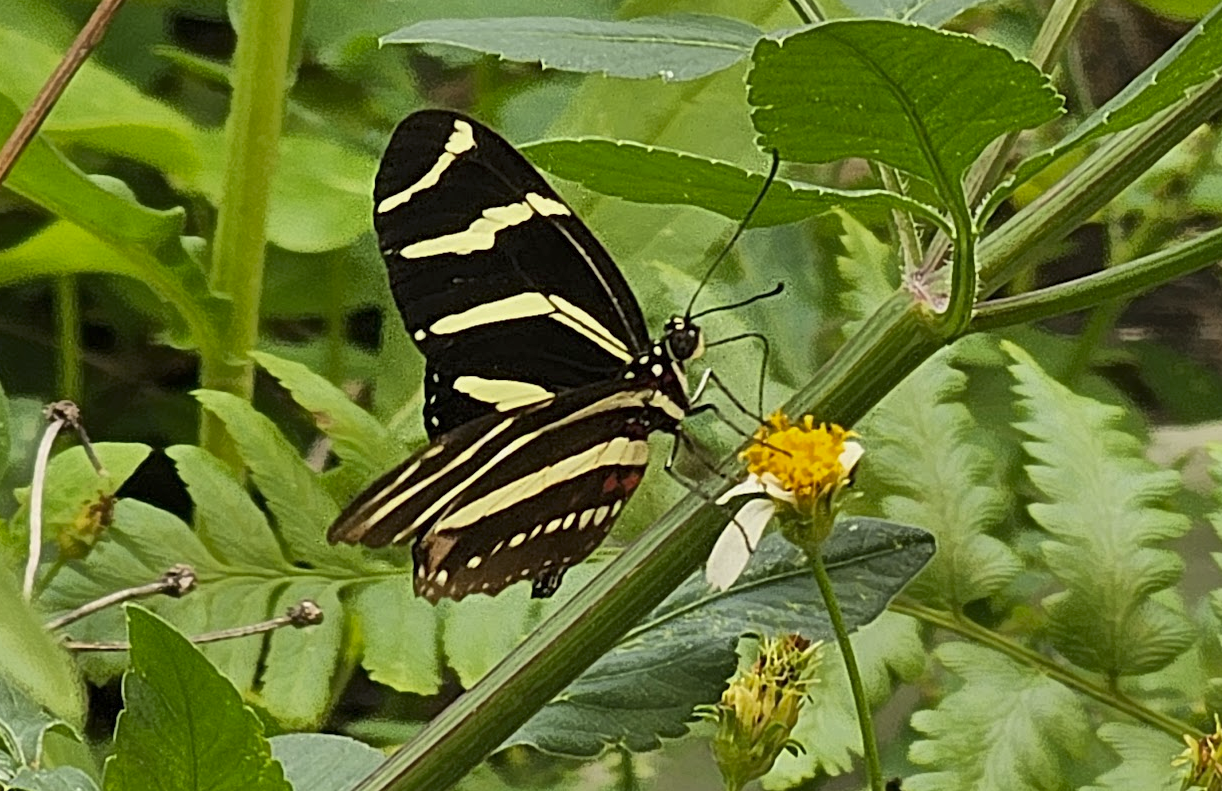
(Zebra Longwing butterfly, state butterfly of Florida, Heliconius charithonia)
The state of Tennessee claims Purple Passionflower as its state flower, and for good reason! This plant is native to the entirety of the Southeastern United States, from Kansas east to the Atlantic ocean and then all the way south to Miami. Resilient, beautiful, and ... tasty…?
That is absolutely right! Passiflora incarnata have several edible parts (with exceptions if you are pregnant, allergic, or on a medication which may have counterindications). I dry out the leaves in my oven on its lowest setting until they are shriveled up, and then I add them to a tea bag and brew it with boiling water and a teaspoon of honey for a minimum of 6 minutes. You can also cook and/or brew the flower itself, which has a very light, slightly grassy, and slightly sweet flavor. I have intense anxiety, and I have found that a glass of Passiflora incarnata tea helps ease my anxiety. But ... that is not even close to the best part...
I am passionate about passionfruit! These are not the same passionfruit you would find at Publix, those are the agricultural crop Passiflora edulis. You can tell the fruit from a Purple Passionflower are ready when they are squishy and start to turn yellow. Sometimes they will fall off the vine and lay on the ground—this does not necessarily mean they have gone bad! Pick it up, check to see if they have been popped open or if there are any holes in the skin. Scrub the skin under water for at least 10-15 seconds, then pop it open and check the inside! If you picked them when they are ripe, you'll see a fluffy, white membrane surrounding dozens of sweet, yellow sacks (pulp) containing a gritty, black seed. The seeds are not harmful and you can either spit them out or swallow them.
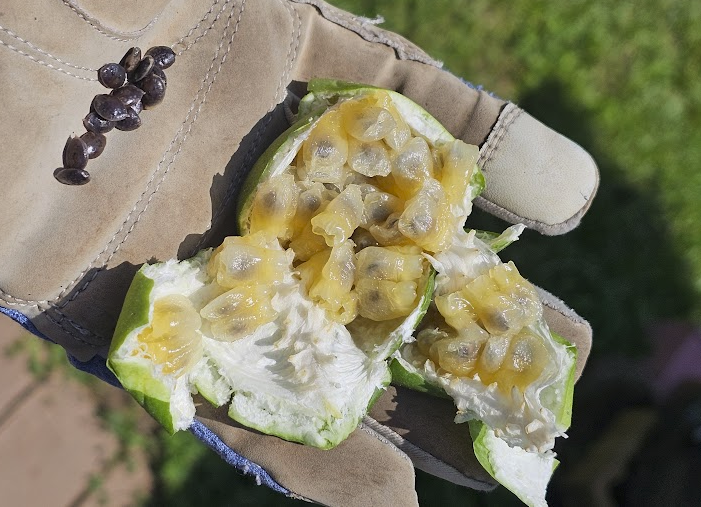
(Inside of a Purple Passionflower fruit)
The last thing that I will mention about the Purple Passionflower is that there are other wonderful variations! Corkystem Passionflower is much more small, but is often the more dominant larval host plant for butterfly caterpillars in Central and South Florida. Pineland Passionflower, Passiflora pallens, is a slightly more rare shade-friendly alternative for garden landscapes. This also includes the Yellow Passionflower, Passiflora lutea, which I have personally found growing wild on the FSU main campus!
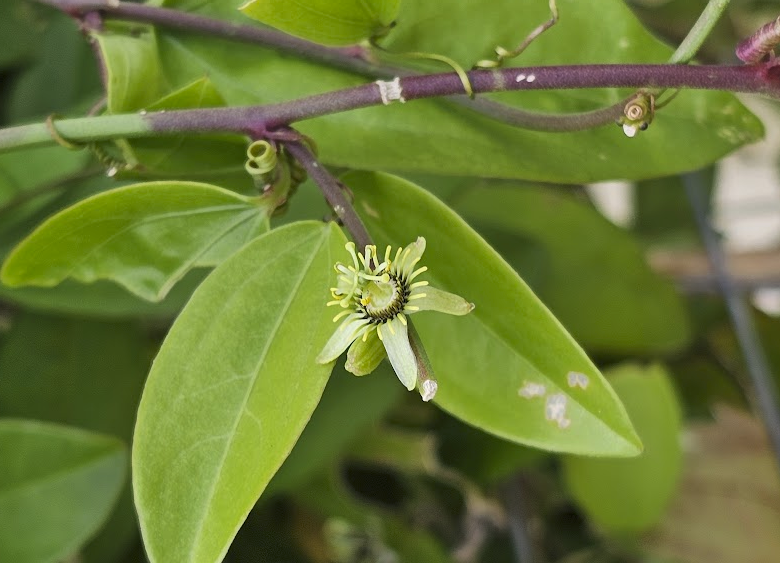
(Corkystem Passionflower, Passiflora suberosa)
Please be on the lookout for non-native Passionflowers, such as the traditional South American Passionfruit (Passiflora edulis), and garden shop varieties and hybrids such as red/scarlet passionflower and blue/cerulean passionflower. These species are considered invasive and will soon displace local populations if nothing is done to stop their spread. The native butterflies can only eat native passionflowers, and there is no concrete scientific evidence to support otherwise.
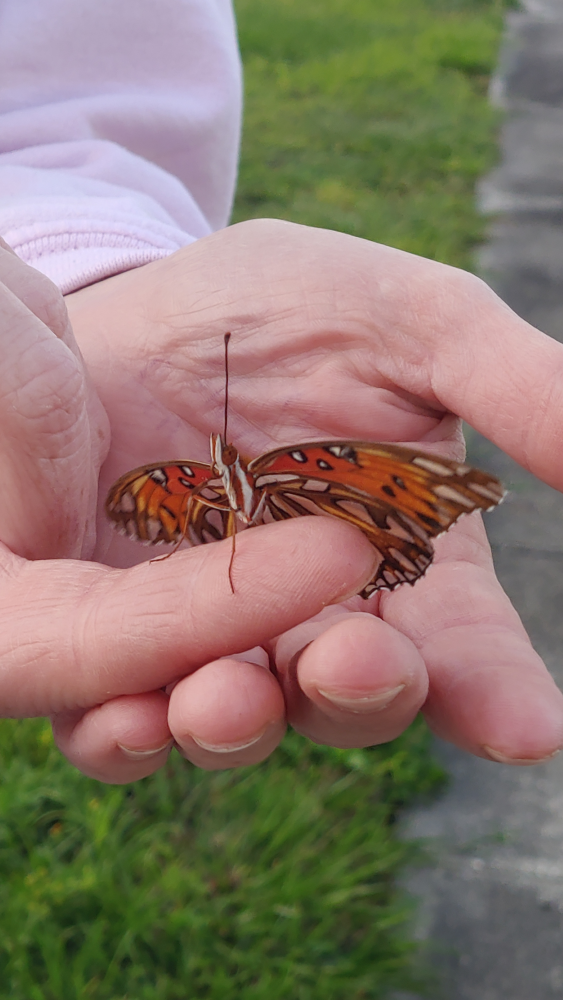
(My friend Katherine holding a Gulf Fritillary Butterfly, Dione vanillae)
If you want to learn more about how to take incredible pictures like these, please join me for the FSU sustainability wildlife photography workshop on either Tuesday, October 14th at 10AM OR Thursday, October 16th at 12PM.
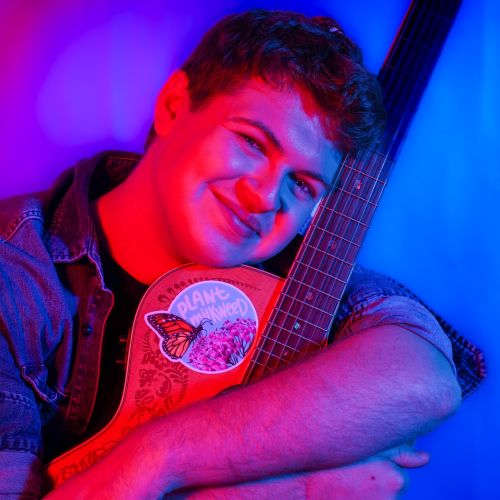
(Author/Photographer Bryce Lovelace)

